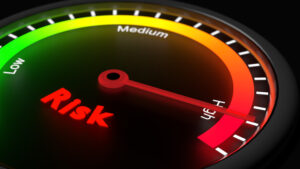Systemic Risks Abound
The comments below are an edited and abridged synopsis of an article by Charles Hugh Smith
For the past 22 years, whenever the stock market whimpered, the Fed rushed to soothe it. There are two consequential results of the Fed as savior: It has perfected moral hazard, and non-manipulated market forces have been extinguished.
The Fed is now a quasi-religious savior and helicopter parent. Every day, Fed speakers take to the pulpit for another sermon about the Fed’s god-like power and wisdom, and the true believers soak up every word.
With a savior like the Fed, you don’t need a real economy or a real market; all you need is the assurance that the Fed will save every market from every consequence.
All this is fine while it lasts, but since risk cannot be dissipated, the Fed has transferred decades of fast-rising risk to the entire system. It has stripped the entire financial system of self-correcting mechanisms. This is a recipe for systemic failure and collapse.
There is no way to wean the system off its dependence on the Fed, and no way to restore organic market functions. The slightest reduction in the Fed’s stream of trillions will crash the market because there is literally nothing holding it up but Fed spew—monetary and verbal.
The system’s sensitivity to the Fed’s trillions of dollars and claptrap preaching is diminishing, which is why the Fed is printing trillions, and why Fed speakers are out every single day.
Remarkably, few anticipate any consequence from the Fed’s perfection of moral hazard and the system’s 100% dependence on the Fed even as diminishing returns gnaw away at the efficacy of the Fed’s policies and pronouncements.
If you wanted to design a system guaranteed to collapse in a heap, you’d make moral hazard ubiquitous and you’d make the system 100% dependent on a hubris-soaked faux savior. That describes the US economy and financial system perfectly.

